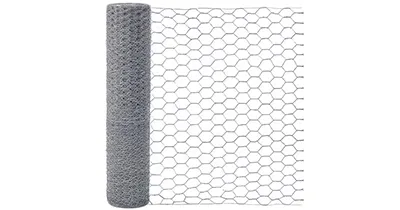-
 Phone:
Phone: -
 Email:
Email:

rock mesh retaining wall
Rock Mesh Retaining Walls A Robust Solution for Soil Retention
In the realm of civil engineering, retaining walls play a critical role in managing earth pressure and preventing soil erosion. Among the various types of retaining walls, rock mesh retaining walls have emerged as a preferred choice for many projects due to their strength, aesthetic appeal, and environmental benefits.
What is a Rock Mesh Retaining Wall?
A rock mesh retaining wall is constructed using a combination of robust steel mesh and natural rock or boulders, creating a structure that is both visually pleasing and highly functional. The steel mesh acts as a containment system, holding the rocks in place while allowing for drainage and reducing hydrostatic pressure from accumulated water. This design is particularly advantageous in areas where landscape aesthetics and environmental considerations are paramount.
Benefits of Rock Mesh Retaining Walls
1. Structural Integrity The primary function of a retaining wall is to resist the lateral pressure of soil. Rock mesh walls are capable of bearing substantial loads, making them suitable for a variety of terrains, including steep slopes and unstable soils.
2. Natural Drainage One of the most significant advantages of rock mesh retaining walls is their ability to facilitate drainage. The design allows water to flow through the voids between the rocks and mesh, preventing water buildup behind the wall, which can lead to pressure issues. Proper drainage reduces the risk of wall failure and extends the life of the structure.
rock mesh retaining wall

3. Erosion Control Rock mesh walls provide effective erosion control by stabilizing soil and preventing landslides on sloped terrains. By utilizing natural materials, they blend seamlessly into the environment while retaining soil effectively.
4. Aesthetic Versatility Unlike traditional concrete retaining walls, rock mesh walls offer a more natural look. They can be customized with various types of rock to fit the landscape design, making them a popular choice for residential, commercial, and public spaces.
5. Eco-Friendly The use of natural rocks minimizes the need for concrete and other synthetic materials, making rock mesh retaining walls a more sustainable option. They can also support vegetation growth, which further enhances their environmental benefits by promoting biodiversity.
Installation Process
The installation of a rock mesh retaining wall involves several critical steps. First, site preparation is essential. This includes clearing the area where the wall will be installed and ensuring proper drainage. Next, a foundation is established, usually comprised of compacted gravel or crushed stone to provide a stable base. The steel mesh is then erected, followed by strategically placing rocks within the mesh. The method of filling the mesh with rocks can vary, but it typically involves layering for optimal stability.
Conclusion
Rock mesh retaining walls represent a fusion of engineering robustness and environmental mindfulness. They not only serve the essential function of soil retention but also enrich the landscape aesthetically. As communities continue to seek sustainable and durable infrastructure solutions, rock mesh retaining walls stand out as a formidable option that caters to both functional and ecological needs. With their myriad benefits, it’s clear why they are becoming an increasingly popular choice in modern construction and landscape design.
-
Wire Mesh for Every Need: A Practical SolutionNewsJul.25,2025
-
Steel Fences: Durable, Secure, and Stylish OptionsNewsJul.25,2025
-
Roll Top Fencing: A Smart Solution for Safety and SecurityNewsJul.25,2025
-
Cattle Farm Fencing Solutions for Maximum SecurityNewsJul.25,2025
-
Affordable Iron Binding Wire SolutionsNewsJul.25,2025
-
Affordable Galvanized Wire SolutionsNewsJul.25,2025
-
Wire Hanger Recycling IdeasNewsJul.25,2025








